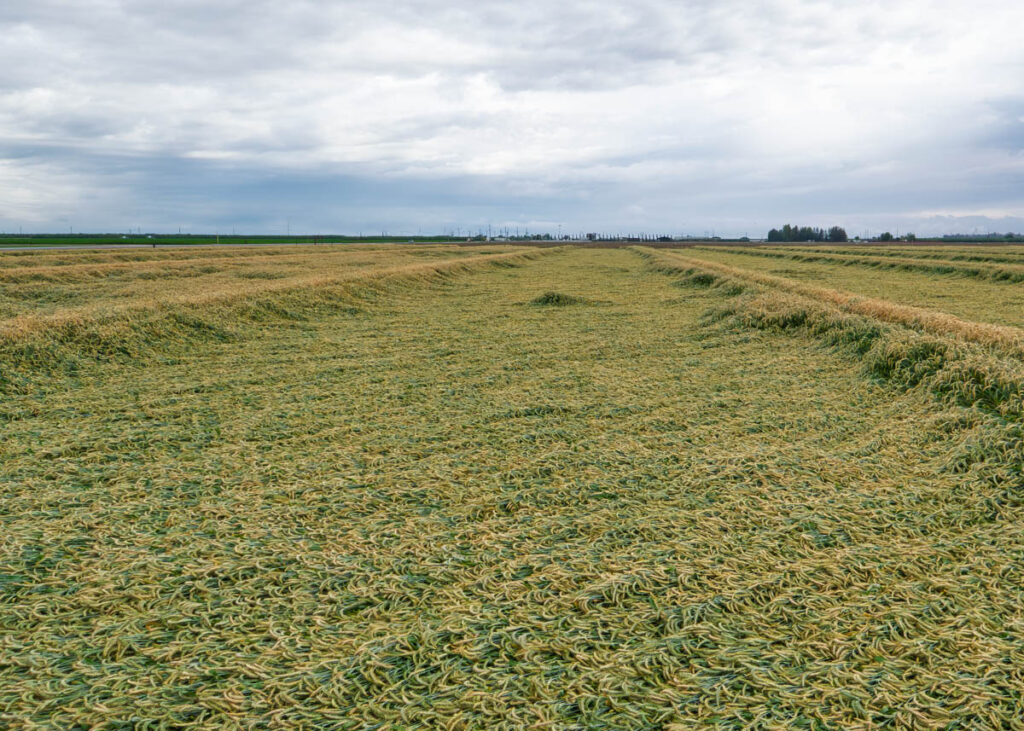Often, farmers don’t even know what row crop lodging is until their beautiful-looking corn or wheat field suddenly gets flattened by strong winds. Crop lodging happens when the stems of a crop bend or break, causing plants to fall over—usually close to harvest. It’s a disappointing sight after investing so much time, energy, and money into growing a high-yielding crop.
Farmers always strive to grow and harvest the best yield possible – on time and of top quality. But when a crop becomes too tall or too heavy for its stem structure, lodging becomes a real threat. This problem is especially common with new crop varieties that may produce excellent yields but lack the stem strength or root depth to support them.
What Causes Crop Lodging?
Crop lodging occurs due to a combination of factors:
- Heavy grain heads or ears that the stalk cannot support
- Weak stem structure or shallow root systems
- High seeding rates that lead to taller, thinner, and more vulnerable plants
- Excess moisture, particularly from irrigation before a windstorm
- Unfavorable weather, such as high winds and rain during late growth stages
These issues are often amplified when farmers grow unfamiliar or newly released seed varieties.
Why Lodging Matters to Farmers
Lodging not only damages your crop visually—it hits your bottom line. Lodged crops can:
- Reduce yield by 5% to 40%, depending on severity
- Complicate harvesting, increasing time and fuel use
- Cause grain quality loss from rot and disease exposure
- Create stand uniformity issues, especially in corn and wheat
Studies show that in wheat, severe lodging can reduce yield by up to 40%, especially when it occurs before grain fill. In corn, lodged stalks slow down harvest and often result in kernel loss.
How to Minimize Crop Lodging Risk
Thankfully, there are several effective ways to reduce the chances of lodging in row crops like corn and wheat:
- Adjust Seeding Rates. Lowering seeding rates—especially with new varieties—helps reduce competition and encourages stronger, thicker stems.
- Time Your Planting Wisely. If possible, plant early in the season to ensure your crop matures before high-wind months. This reduces exposure to harsh weather during vulnerable stages.
- Manage Irrigation Strategically. Avoid irrigating immediately before or during forecasted wind events. Wet soil weakens root anchorage and makes it easier for plants to topple over.
- Apply Strengthening Nutrients. Nutrient supplements like calcium and silicon improve stalk integrity and resistance to physical stress. These amendments are relatively inexpensive and can make a significant difference.
- Seek Professional Advice. Consult your PCA (Pest Control Advisor) or crop advisor. Their expertise can help tailor your fertility and variety selection for your field’s specific conditions.
Learn from Experience: Take Notes and Track Observations
One of the most effective ways to reduce lodging in future seasons is to keep detailed records of each crop cycle. Consider tracking:
- Seeding rates
- Planting and harvest dates
- Fertilizer and amendment use
- Weather events and lodging occurrences
- Crop variety performance under stress
Farmers who consistently take notes build a valuable database for better decision-making. For example, knowing which corn variety stood up best in a windy season can guide your planting choices next year.
How AgNote Can Help Row Crop Growers
AgNote farm management software offers an easy way to record and manage all of this critical crop information. With AgNote, you can:
- Track crop details for every field and season
- Log scouting notes, weather impacts, and growth observations
- Upload images, view field maps, and set reminders
- Compare seeding rates and lodging patterns across years
AgNote’s intuitive interface helps you stay organized, spot trends, and make better planting and management decisions. Whether you’re a corn grower or managing multiple row crops, AgNote simplifies the process.
